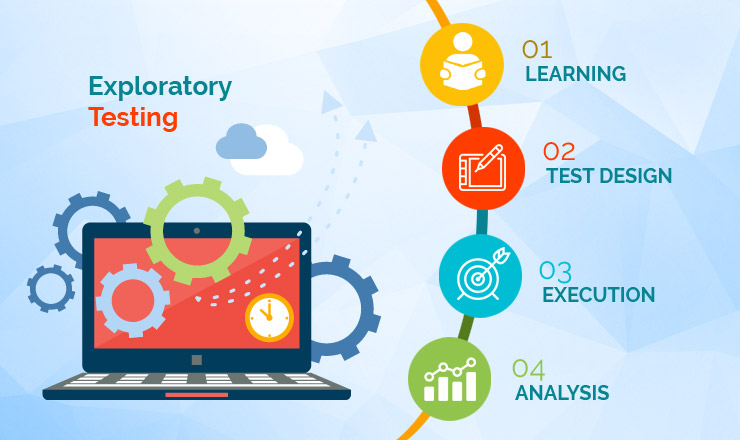
Test Environment Management (TEM) refers to directing, controlling and managing the enterprise level test environments. It consists of using procedures, tools and resources to manage multiple components like software, hardware, databases, test data and applications. TEM in cloud is another aspect that offers on-demand test labs in multi-platform environments, which are scalable and virtualizable. Such test environments can be quickly provisioned in the cloud and turned on/off and scaled down/up as required. As business IT landscapes are becoming more complex and integrated, it’s increasingly becoming a big challenge to manage test environments.
Download Free E-Book: Test Data Management – Key Challenges
Key TEM Activities
Key TEM activities may vary depending on the technique chosen and may include:
- Test environment allocation as needed
- Maintaining a central storehouse of test-environments (in their latest version) along with connectivity details
- Creation of new test environments
- Provisioning infrastructure and platform
- Test environment configuration (module, system, sub-module)
- Test data provisioning (privatization, traceability, ETL, segregation)
- Endpoint integration
- Monitoring the test environment
- Updating/deleting outdated test-environments and their details
- Investigation of test environment issues and at times, co-ordination till its resolution
- Analyzing data for identifying trends, spotting test environment issues, and taking steps to resolve them
Key Challenges in TEM
- Remote environment: Test environments or assets are often placed in geographically remote sites, making the test teams depend on support teams at the location to deal with challenges related to hardware, software, firmware, networking, build/firmware upgrade etc. this often takes time and causes delays, especially where the test teams and support teams are based in different time zones.
- Virtual test environments: Move to virtualization often creates VM management problems. Easy integration of existing test tools, upgrading existing hardware (to avoid purchasing additional hardware), ensuring that a user accesses only his/her respective virtual test environment, providing connectivity to employees (including those at remote locations) to the new virtual test methodology are other challenges in cloud-based TEM. Though virtualization let testers create unlimited user configurations and test with different user profiles and even potentially incompatible applications, challenges like equipment conflict (between drivers of tested equipment and virtual environment) can be difficult to deal with.
- Shared environment assets: In most cases, test and development teams use the same environment and assets, which causes conflict when both teams want to use the same resources simultaneously. Since test environment assets aren’t consolidated properly and don’t have any tracking mechanism, some are often left under- or over-utilized.
Some other challenges include
- Elaborate set up times for test environments
- Test environment configuration issues
- Absence of a dedicated TEM team
- Best practices are not defined or implemented
- Nil or little reusable value and documentation
- Implementing precise forecasting and capacity demands
- Lack of adequate, responsive support to resolve issues in test environment
- Most activities involved manual work as no tools are employed
Best Practices in TEM to overcome the challenges
Working under these challenges have made organizations worried about lower test coverage and escalating operations cost. Thus, after recognizing these challenges, they are implementing best practices to change the present model of operation to a test environment that’s efficient and delivers results fast.
- Establishing a dedicated TEM team: Assigning complete ownership of the test environment to a dedicated team will make it the single point of contact for all test related activities and make it accountable for test environment management, thus removing problems associated with accountability or poor management and irregular maintenance which happen when ownership is shared.
- Implementing thorough documentation: Thorough documentation of test environment resource allocation, configurations and incidents will help in effective management of test environments. Such documentation should be complemented by the four W’s namely Who (refers to the person or team requesting or initiating the alteration), What (description of the alteration, request or incident), When (time or period of the alteration, request or incident) and Why (the reason of alteration, request or incident). Development teams can document and manage such data though you can also use shared spreadsheets and documents provided they are accessible to the development team members to help them stay updated about the test environment status and organize testing as per the correct schedule.
- Standardization of language and terminology: Ensuring the same terminology is used at the enterprise level (and not different words created by different individuals or test teams that create confusion and cause delays) will improve the overall quality of test environment. Language standardization will support quick and better understanding and make collection and sharing of information fast and efficient.
- Knowledge management: A centralized test environment management team will ensure availability of all required information to the stakeholders and end users. It will be the responsibility of the TEM team to maintain information related to all TEM activities including test environment schedules, plans, recovery procedures, solution documents, incidents, status reports and others as necessary by audit and governance requirements.
- Virtualization: Custom instances can be created and run simultaneously to avoid scheduling conflicts, speed up test cycles and make reporting simpler. Developers and testers can even recreate bugs by taking snapshots of test environment. Several common issues faced by testers and developers can be dealt with virtualization.
- Automation: Test environment’s efficiency can be improved by using regressive test automation and developing automation frameworks. Use of a single or multiple tools can be used to automate most activities across test environment lifecycle such as management of test data, auto deployments and auto provisioning. Many companies use automation strategies like service virtualization and cloud technology to improve their turnaround time for test environment provisioning.
- Regular evaluation of test environment: This helps to keep the test environment as realistic and precise as possible. After each major test cycle, evaluate what’s working, what’s not, the resources that are under- or over-utilized etc and make required changes accordingly to imitate end-user environments better. It’s equally important to consider the requirements of the testing teams and alter environment resource allocation accordingly.
Download Free E-Book: Use of multiple Test Approaches in DevOps
Conclusion
With a dedicated TEM team, businesses can enjoy faster test execution of multiple and large scale releases together with seamless management and support. TechArcis offers dedicated test environment management services covering the entire spectrum of operations and activities to ensure optimum asset utilization and significant cost benefits.
Connect TechArcis today to leverage our unified test automation framework to overcome Key challenges in Test Environment Management and get your software, Website/Web Apps functionally ready for your niche audience.
More Related Blog

What is Exploratory Testing? Why When do we require Examples – (Updated 2024)
Exploratory testing definition: Exploratory testing is the approach, to an application’s evaluation, which integrates three things – exploration of the application with design of test scenarios and beginning of the actual testing process......
Read More
Software Testing Lessons You Can Take From Pokemon Go
Unless you’ve been living under the rock, you know Pokemon Go pretty well. This location-based, augmented reality game has created a rage in the gaming industry. Within a few weeks of its launch, the game’s daily active users are neck … Continue reading "Key challenges in Test Environment Management (Updated JAN 2024)"...
Read More
5 Ways to Up Your Software Release Management Game
A software application goes through many stages before it is released, starting from ideation, to testing and bug fixing. With all the efforts and capital you invest in the product development process, it is natural for you to look for … Continue reading "Key challenges in Test Environment Management (Updated JAN 2024)"...
Read More